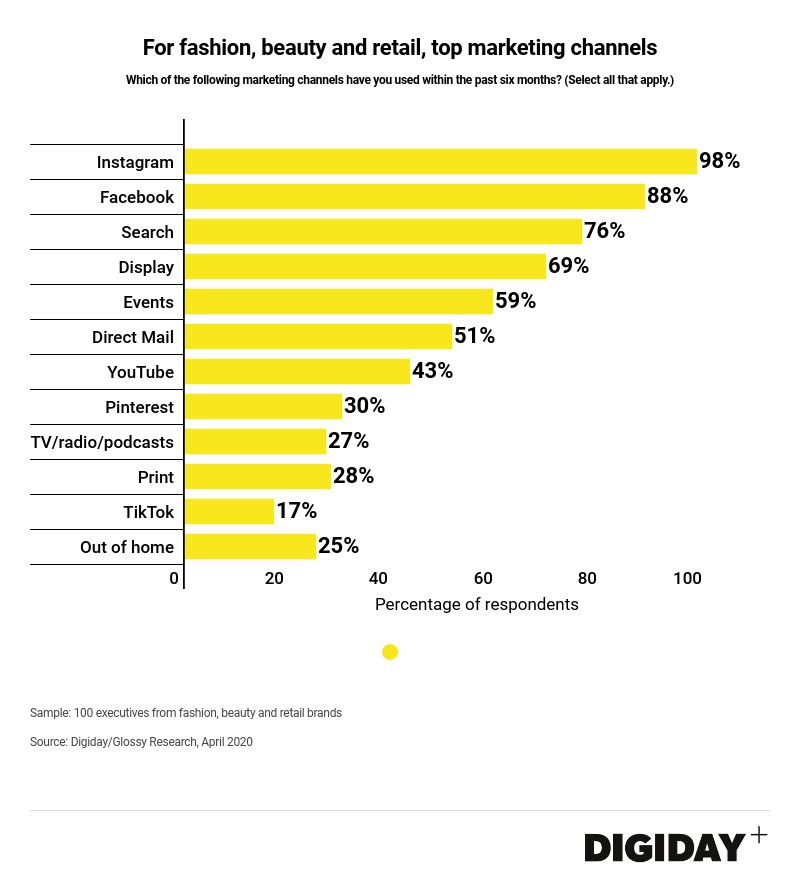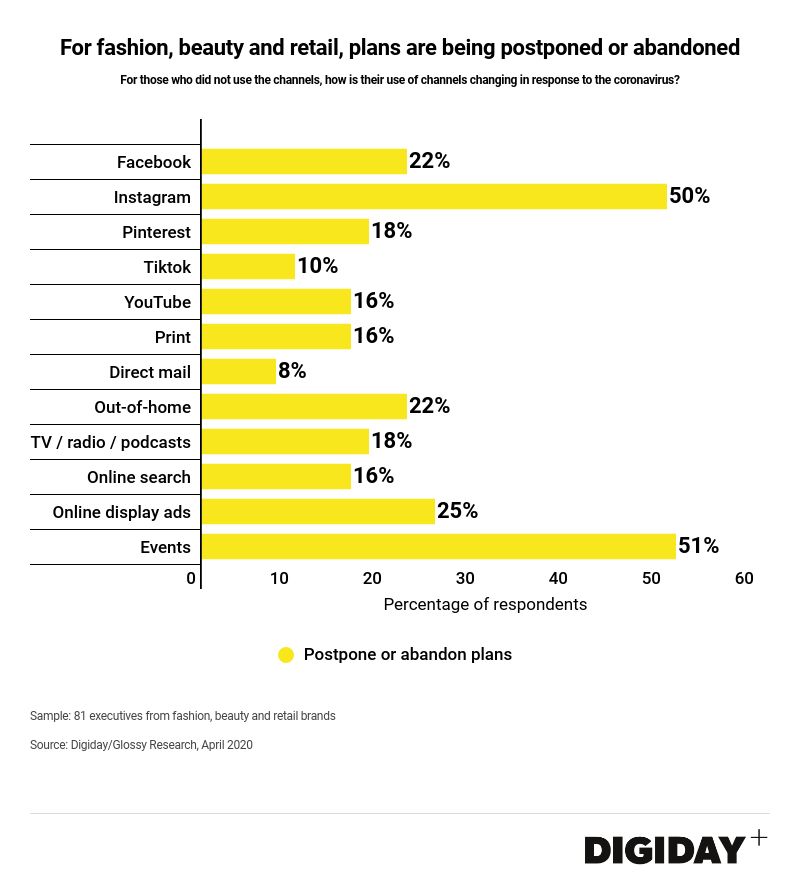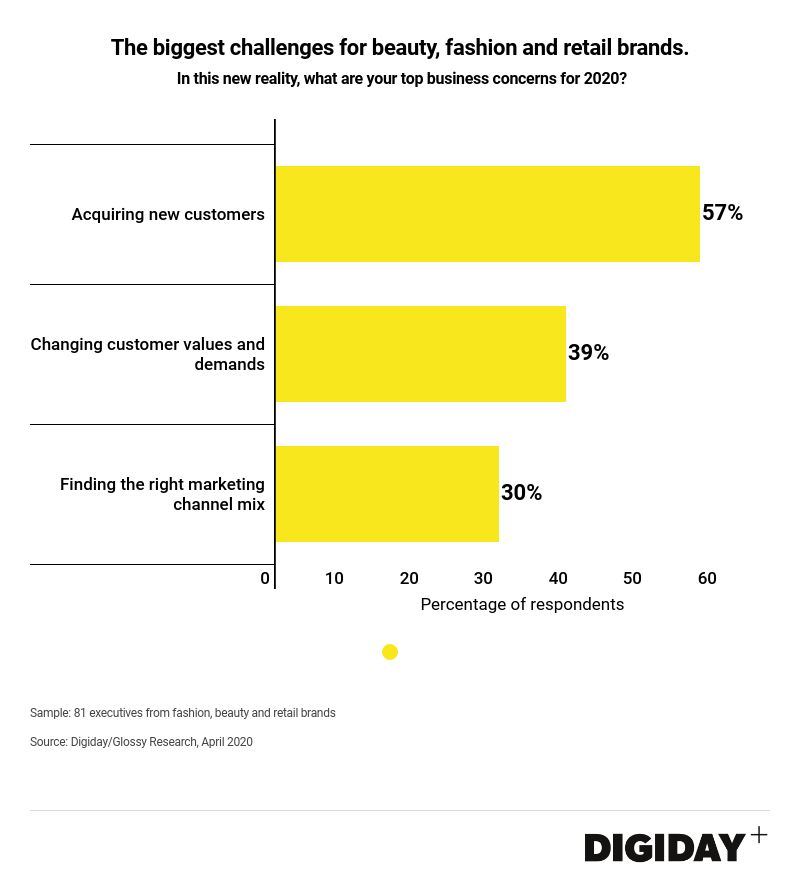Digiday Research: How ad spending is changing in the coronavirus era

This research is based on unique data collected from our proprietary audience of publisher, agency, brand and tech insiders. It’s available to Digiday+ members. More from the series →
The vast majority of ad campaigns are on hold or canceled — 73 percent of buyers said brands are now “pausing” campaigns while they assess their next moves.
A new survey from Digiday/Glossy that asked 100 brands in the retail, fashion and beauty industries about changes they’ve made to their marketing strategies.
The top five channels brands were either temporarily reducing or temporarily leaving were in print advertising, direct mail, out of home ads, TV/radio and podcasts, and of course, events. The top channels brands planned to permanently reduce or entirely eliminate advertising in were events, TV/radio and podcasts, and online display.

The largely unscathed channels were Facebook, Instagram, TikTok and online search.

The data gives a snapshot of the marketing industry at a time where many are debating whether there are permanent, lasting effects of the current crisis.
The survey also asked those who had plans to grow expenditure in certain channels and if the crisis has made them rethink those plans.
About 22% of respondents said they would postpone plans to spend money on out-of-home ads, while 48% said they would postpone plans to do any new marketing events.

The survey also asked about the top business concerns for 2020 in light of the coronavirus. Finding the right marketing channel mix was the top concern for 30% of participants, while 58% of brands said its acquiring new customers.
The impact of this on the industry is stark. While most of the data so far has focused on the expenditures falling, the fact is that ad impact is relatively diverse depending on category. The IAB found in an earlier study that among those adjusting spend, there was a 33 percent drop in spend on digital media, and a 39 percent drop in spend in traditional media. The biggest impacts there were on print and linear TV, as well as display, in line with Digiday’s results.
More in Marketing

How brands shifted marketing and media strategies through year of tariffs
Marketers share how they navigated the maze of tariffs and regulatory changes this year.

Despite the hype, agentic AI isn’t ready to take the brand controls just yet
Despite agentic AI boosting content creation speed, human oversight remains critical due to concerns over hallucination, brand consistency.

Starbucks hires first-of-its-kind marketing role heading up fashion and beauty collabs
Neiv Toledano has joined Starbucks as its senior marketing manager of fashion and beauty.





